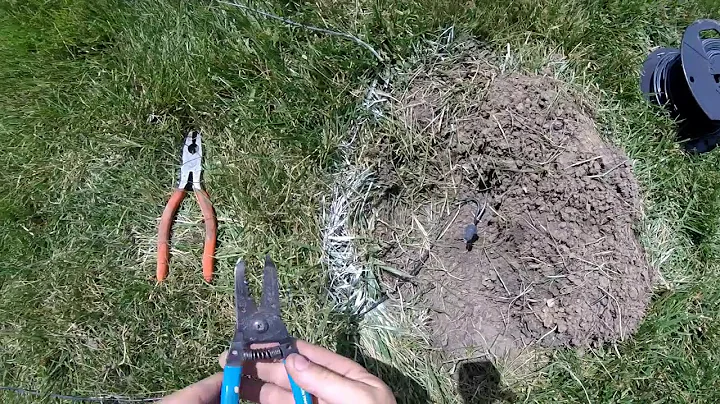The Profitability Challenge for Spotify: Renegotiating Deals and Direct Licensing
Table of Contents
- Introduction
- The Revenue Model of Spotify
- The Challenge of Profitability for Spotify
- Renegotiating Agreements with Record Labels
- Direct Deals with Independent Artists
- The Potential Benefits for Spotify
- The Impact on Major Record Labels
- The Future of Spotify and Streaming
The Revenue Model of Spotify
Spotify, the popular music streaming platform, generates a significant portion of its revenue from selling advertising and subscriptions. However, an interesting aspect of Spotify's business model is the amount they pay to creators and rights holders for licensing recordings and public performance of songs. This amounts to approximately 70% of their revenue. Despite their increasing number of paid subscribers, the margin they are left with is not substantial enough to ensure profitability.
The Challenge of Profitability for Spotify
With the ever-growing competition in the music streaming industry, Spotify faces the challenge of becoming profitable with only the remaining 30% of revenue. This raises the question of whether they can sustain their business model and achieve profitability. The need for a larger profit margin prompted Spotify to reconsider their agreements with major record labels.
Renegotiating Agreements with Record Labels
To address the profitability issue, Spotify recently renegotiated its agreements with major record labels and independent labels like Merlin. Previously, the record labels received approximately 58% of the revenue, with publishers receiving 12% and the remaining 30% going to Spotify. However, these renegotiations resulted in reduced payments to record labels, potentially bringing down the percentage to around 52%. The agreement also acknowledges that as Spotify attracts more subscribers, royalty rates will increase, benefiting both parties.
Direct Deals with Independent Artists
In addition to renegotiating agreements with record labels, Spotify is exploring direct deals with independent artists. By bypassing the major labels, Spotify aims to establish direct licensing agreements that could potentially result in lower payments to artists. Currently, major labels receive a significant portion of the revenue, leaving artists with a smaller percentage. Spotify believes that by directly licensing recordings from independent artists, they could potentially pay them a higher percentage, possibly around 40%, instead of the 50% they pay to major labels.
The Potential Benefits for Spotify
The ability to establish direct deals with independent artists offers several potential benefits for Spotify. Firstly, it could lead to lower expenses on royalty payments, allowing them to retain a higher percentage of revenue. Secondly, it provides an opportunity to foster relationships with emerging talent and nurture their growth within the platform. Lastly, it allows Spotify to differentiate itself from competitors by offering unique content that may not be available through major record labels.
The Impact on Major Record Labels
While Spotify engages in direct deals with independent artists, it aims to maintain a cooperative relationship with major record labels. However, the increasing popularity of streaming and the potential for direct deals may pose a challenge for major labels in the long run. As more independent artists find value in partnering with Spotify, major labels may face increased competition for talent and potentially lose market share to the streaming giant.
The Future of Spotify and Streaming
Looking ahead, the future of Spotify and streaming holds great potential for growth and innovation. As streaming continues to dominate the music industry, Spotify's ability to adapt to changing trends and establish beneficial partnerships with both major labels and independent artists will be key to its success. The evolving landscape of the music industry will undoubtedly shape the strategies and decisions made by Spotify in the years to come.
Highlights
- Spotify's revenue model heavily relies on advertising and subscriptions, with approximately 70% going towards licensing recordings and public performance of songs.
- The challenge of profitability arises due to the small profit margin left after paying creators and rights holders.
- Spotify renegotiates agreements with major record labels, potentially reducing the percentage paid to around 52%.
- Direct deals with independent artists offer opportunities for lower royalty payments and unique content on the platform.
- Major record labels may face competition for talent as more independent artists partner with Spotify.
- Spotify's ability to adapt and form beneficial partnerships will determine its success in the evolving music industry.
FAQ
Q: How does Spotify generate revenue?
A: Spotify generates revenue through selling advertising and subscriptions.
Q: What percentage of revenue does Spotify pay to creators and rights holders?
A: Approximately 70% of Spotify's revenue goes towards licensing recordings and public performance of songs.
Q: Why is profitability a challenge for Spotify?
A: Despite increasing paid subscribers, Spotify's profit margin is not substantial enough to ensure profitability.
Q: How has Spotify addressed the profitability issue?
A: Spotify recently renegotiated agreements with major record labels, reducing the percentage paid to them.
Q: How does Spotify plan to lower royalty payments?
A: Spotify aims to establish direct licensing agreements with independent artists, potentially paying them a higher percentage.
Q: What impact does direct deals with independent artists have on major record labels?
A: Major record labels may face increased competition for talent as more independent artists partner with Spotify.
Q: What does the future hold for Spotify and streaming?
A: The future is promising, with Spotify aiming to adapt to changing trends and establish beneficial partnerships for continued growth in the music streaming industry.
Resources







